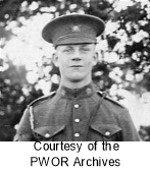|
Nov 14, 1894
|
Born in Nottingham, England to
Henry and Eliza (nee Brittan) Varley
|
|
May 20, 1909
|
Embarked the SS Corsican in
Liverpool under the care of the Dr. Barnardo’s Homes as a British Home Child
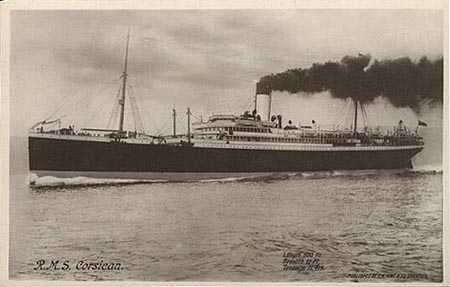
|
|
May 28, 1910
|
Disembarked in Montreal,
Quebec and proceeded to the Barnardo’s Boy’s Home in Toronto, Ontario
The 1911 Canadian Census shows
him and his brother Herbert, living with the William Symons Family as
boarders in Belleville, Ontario
|
|
Jul 23, 1913
|
Shown on the payroll of the 15th
Regiment Argyll Light Infantry as a Bugler in “D” Company in Belleville,
Ontario
|
|
Nov 7, 1914
|
Attested into the 21st
Battalion CEF in Kingston, Ontario
Ø Number 60018 (temporary number 923)
Ø Next of kin given as Henry (Herbert) Varley,
brother, 61 Burly St., Belleville, Ontario
Ø Previous occupation given as Polisher and Plater
Ø Previous military experience given as the 15th
Regiment, Argyll Light Infantry in Belleville
Ø Religion given as Church of England
Ø Posted to 16 Platoon “H” Company
o
This was later
reorganized into 16 Platoon “D” Company
o
He also performed
as a Bugler in the battalion’s Bugle Band
The battalion trained in the
Kingston area through the winter with headquarters in the Kingston Armouries
|
|
May 6, 1915
|
Embarked the RMS Metagama in
Montreal, Quebec
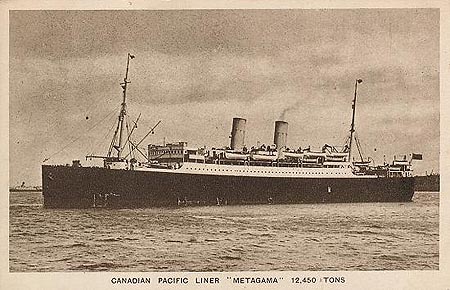
|
|
May 15, 1915
|
Disembarked in Devonport,
England and the battalion proceeded to the West Sandling Camp, near Hythe,
Kent to continue training
|
|
Sep 14, 1915
|
Embarked the St. Seiriol in Folkestone
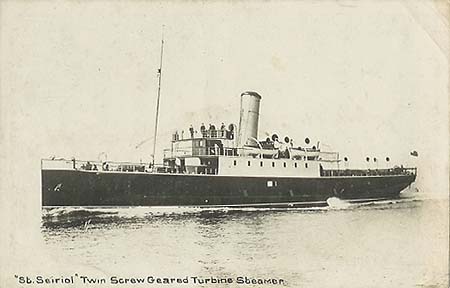
|
|
Sep 15, 1915
|
Disembarked in Boulogne,
France and the battalion proceeded to St. Omer
|
|
Apr 3, 1916
|
Admitted to the No. 4 CFA
(Canadian Field Ambulance) with an accidental bayonet wound to his right
leg. He was placed in the Division
Rest Station to recover
|
|
Apr 10, 1916
|
Rejoined the 21st
Battalion at the front near Voormezeele, Belgium after being discharged from
the rest station
|
|
Sep 15, 1916
|
During the capture of the
heavily defended sugar factory south of Courcelette, France, James Varley
received a machine gun wound that pierced his right arm causing a fracture before
entering his abdomen, lodging in his lower spine. He was evacuated to the No. 6 Canadian
Field Ambulance for first aid before being transported to the No. 3 CCS
(Casualty Clearing Station) where surgery was performed to clean and dress
the wounds.
|
|
Sep 17, 1916
|
Transferred via the No. 16 AT
(Ambulance Train) and admitted to the No. 3 Canadian General Hospital in
Boulogne, France. A second surgery was
performed but the decision was made not to remove the bullet from his spine
as it would be too dangerous. The
bullet was lodged between the 3rd and 4th Lumbar
Vertebrae. A Fecal Fistula had
developed that was leaking fecal matter that could not be repaired. His left leg was initially paralyzed but he
later regained use of it.
|
|
Oct 23, 1916
|
Invalided to England aboard
the Hospital Ship St. Denis
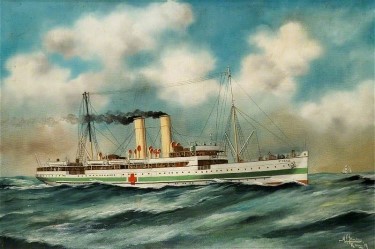
On arrival in England, he was
admitted to the Epileptic and Paralytic Hospital in Maida Vale, London
Transferred to the CCAC
(Canadian Casualty Assembly Centre) for pay purposes while in hospital
|
|
Nov 5, 1916
|
Transferred to the Ontario
Military Hospital in Orpington
|
|
Jan 13, 1917
|
Discharged from hospital and
embarked the SS Northland in Liverpool
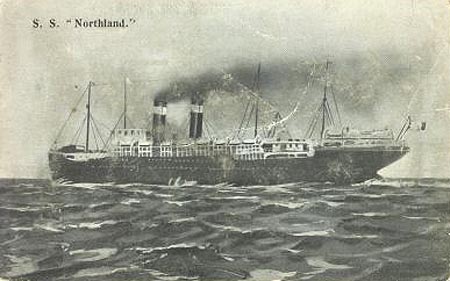
|
|
Jan 23, 1917
|
Disembarked in Halifax, Nova
Scotia and proceeded to Kingston, Ontario where he was admitted to the
Elmhurst Convalescent Hospital
|
|
Jan 27, 1917
|
Transferred to the Ongwanada
Hospital in Kingston
|
|
Oct 17, 1917
|
Transferred to Queen’s
Military Hospital in Kingston
|
|
Nov 11, 1917
|
To be treated as an out
patient of the Queen’s Military Hospital in Kingston
|
|
Dec 26, 1917
|
Re-admitted as an in patient
of the Queen’s Military Hospital in Kingston
|
|
Apr 11, 1918
|
Surgery performed to repair
the leaking bowel, however it continued to leak fecal matter into the abdomen
|
|
Jun 29, 1918
|
Transferred to the
Convalescent Home on Leek Island in the St. Lawrence River, off Gananoque,
Ontario
|
|
Sep 24, 1918
|
Transferred back to the
Queen’s Military Hospital in Kingston
|
|
Oct 3, 1918
|
Medical exam in Kingston notes
Ø Machine gun bullet
remains lodged between his 3rd and 4th Lumbar Vertebra
Ø Man complains of pain
in lower back and weakness of left leg
Ø Board recommends he
be discharged from service with a pensionable disability
|
|
Oct 8, 1918
|
Discharged to duty from
hospital and posted to Military District No. 3 Casualty Company
|
|
Oct 11, 1918
|
Discharged from the CEF in
Kingston, Ontario
Ø Rank on discharge
Private
Ø Entitled to War
Service Badge Class “A” and Class “B”
Ø Proposed residence
on discharge #5 RFD Belleville, Ontario
Following the end of the war,
the 1914-15 Star, British War Medal and Victory Medals were sent to him at
413 Bleecker Ave., Belleville, Ontario
His special qualification for
employment on discharge is listed as Clerk
|
|
Sep 1, 1928
|
Married to Kathleen Van Trump
in Belleville, Ontario
|
|
Dec 4, 1936
|
James Varley had surgery at
the Christie Street Hospital in Toronto to finally remove the bullet from his
spine. The surgery was reported to
have been a success.
|
|
Jun 28, 1938
|
More surgery was performed in
the Christie Street Hospital in an attempt to close the Fecal Fistula that
was allowing fecal matter to leak into the bowel. This was followed by several blood
transfusions. It appears that he
remained in hospital following this surgery.
A final surgery was performed in November 1938
|
|
Dec 23, 1938
|
James Varley died while a
patient of the Christie Street Hospital in Toronto, Ontario and was buried in
the Belleville Ontario Cemetery. His
death was caused by Toxic Osteomyelitis of the spine and Fecal Abscesses in
his abdomen from his colon that has leaked fecal matter ever since his
initial injury in 1916. His death was
ruled to be due to his service at the front, but no Memorial Cross was issued
as he married after his discharge and his mother had predeceased him
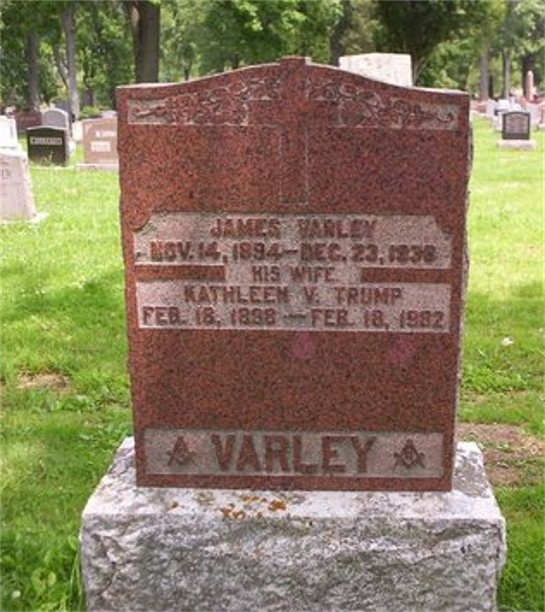
|
|
